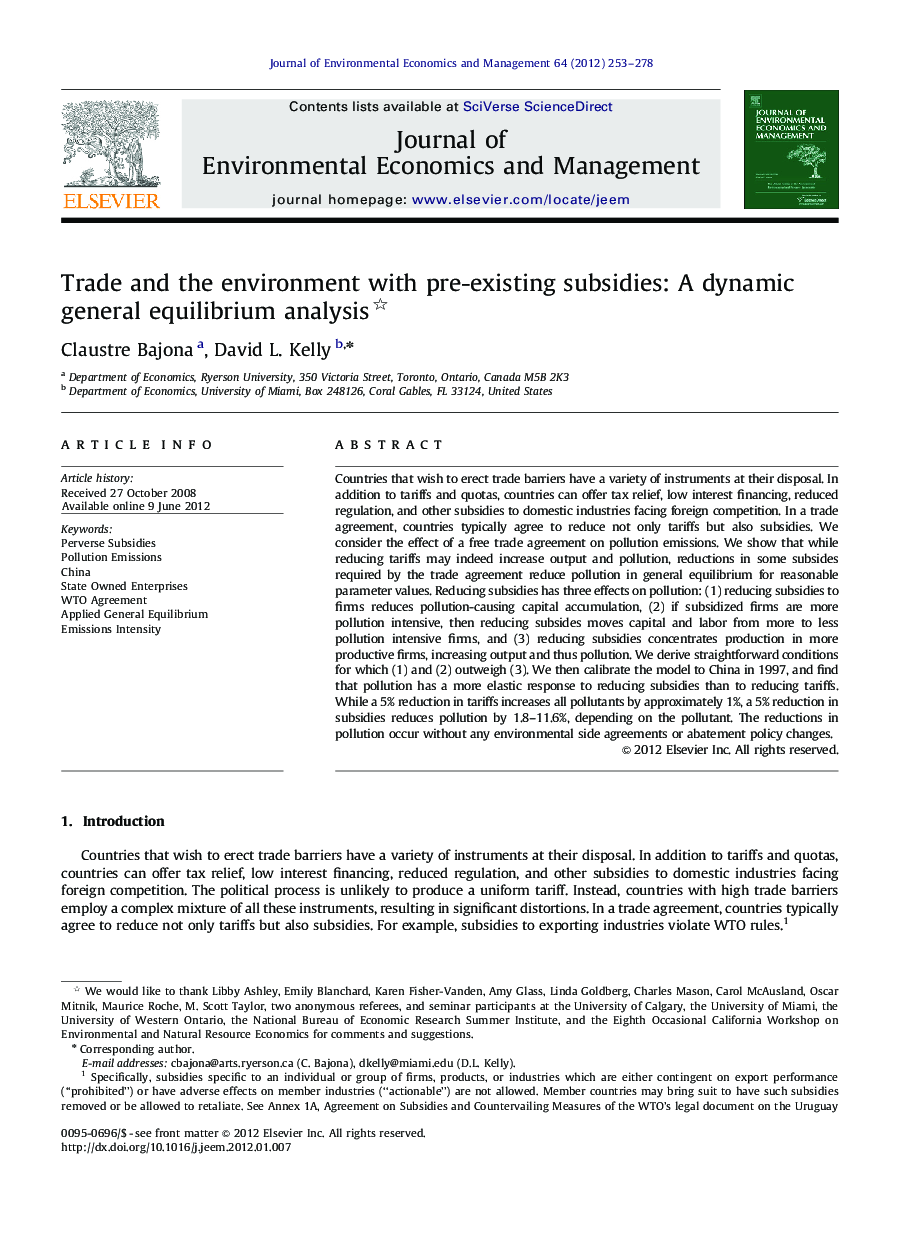| کد مقاله | کد نشریه | سال انتشار | مقاله انگلیسی | نسخه تمام متن |
|---|---|---|---|---|
| 959004 | 929107 | 2012 | 26 صفحه PDF | دانلود رایگان |

Countries that wish to erect trade barriers have a variety of instruments at their disposal. In addition to tariffs and quotas, countries can offer tax relief, low interest financing, reduced regulation, and other subsidies to domestic industries facing foreign competition. In a trade agreement, countries typically agree to reduce not only tariffs but also subsidies. We consider the effect of a free trade agreement on pollution emissions. We show that while reducing tariffs may indeed increase output and pollution, reductions in some subsides required by the trade agreement reduce pollution in general equilibrium for reasonable parameter values. Reducing subsidies has three effects on pollution: (1) reducing subsidies to firms reduces pollution-causing capital accumulation, (2) if subsidized firms are more pollution intensive, then reducing subsides moves capital and labor from more to less pollution intensive firms, and (3) reducing subsidies concentrates production in more productive firms, increasing output and thus pollution. We derive straightforward conditions for which (1) and (2) outweigh (3). We then calibrate the model to China in 1997, and find that pollution has a more elastic response to reducing subsidies than to reducing tariffs. While a 5% reduction in tariffs increases all pollutants by approximately 1%, a 5% reduction in subsidies reduces pollution by 1.8–11.6%, depending on the pollutant. The reductions in pollution occur without any environmental side agreements or abatement policy changes.
Journal: Journal of Environmental Economics and Management - Volume 64, Issue 2, September 2012, Pages 253–278